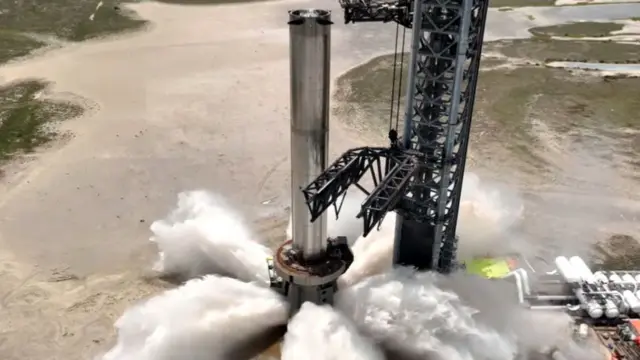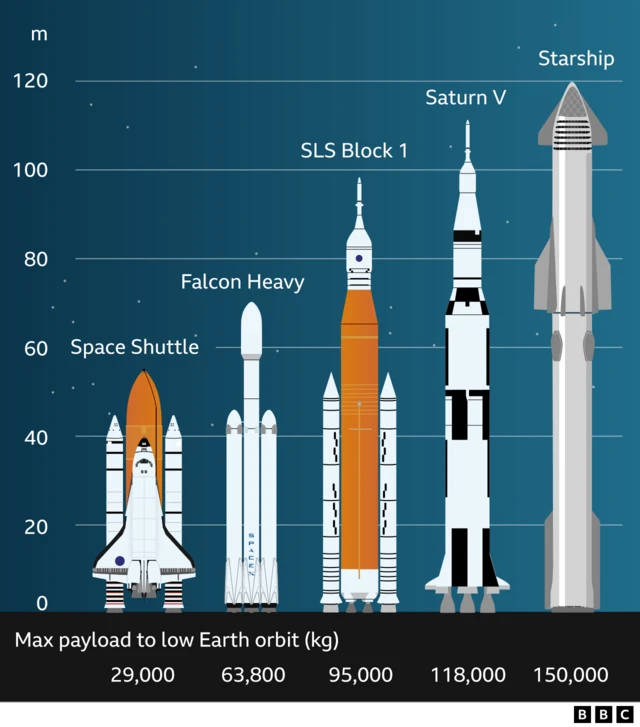Why was there such a big delay between the first and second test?published at 12:51 GMT 18 November 2023
 Rebecca Morelle
Rebecca Morelle
Science editor
It’s taken more than half a year for a second try to launch Starship - a much longer gap than SpaceX anticipated.
The delay has been largely due to new licensing requirements.
After the explosive first test, the Federal Aviation Administration (FAA) conducted an investigation and ordered significant changes before it would grant a licence to fly Starship again.
A review by the US Fish And Wildlife Service was also carried out to assess the environmental impact on the delicate ecosystem surrounding the Texan launch site in Boca Chica.
The agency concluded that there were no significant environmental changes, and Elon Musk said he’d made well over 1,000 improvements to make the rocket more reliable, and the company had carried out 63 “corrective actions” requested by the FAA. So the FAA has now given the go ahead for a second flight.
However, there is still some local opposition to launches in the area. Environmental concerns remain and residents who lived in the area before SpaceX moved in are now subject to regular disruption. Road closures and travel restrictions are a common occurrence when tests are carried out.


